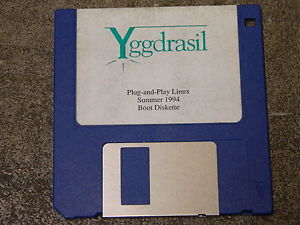Nos primórdios do Linux, Linus lançou o código-fonte do kernel Linux em um estado "inutilizável", supostamente para sinalizar para outros que algum trabalho estava sendo feito para desenvolver um novo kernel semelhante ao Unix. Naquela época, como @RalfFriedi apontou corretamente, o kernel do Linux estava sendo compilado no Minix.
Quanto ao código "utilizável", primeiramente Linus colocou alguns utilitários junto com o kernel do Linux nos primórdios para que outros o testassem, ou seja, bash e gcc :
De História do LINUX por Linus Torvalds
Vincule os grupos do Google ao post da Usenet original .
From: [email protected] (Linus Benedict Torvalds) Newsgroups: comp.os.minix Subject: What would you like to see most in minix? Summary: small poll for my new operating system Message-ID: <[email protected]> Date: 25 Aug 91 20:57:08 GMT Organization: University of HelsinkiHello everybody out there using minix -
I'm doing a (free) operating system (just a hobby, won't be big and professional like gnu) for 386(486) AT clones. This has been brewing since april, and is starting to get ready. I'd like any feedback on things people like/dislike in minix, as my OS resembles it somewhat
(same physical layout of the file-system (due to practical reasons) among other things).I've currently ported bash(1.08) and gcc(1.40), and things seem to work. This implies that I'll get something practical within a few months, and I'd like to know what features most people would want. Any suggestions are welcome, but I won't promise I'll implement them :-)
Então, o Linus estava "distribuindo" o kernel e alguns programas utilitários centrais em um formato de imagem de disquete, para que alguns usuários mais avançados experimentassem e possivelmente contribuíssem.
Posteriormente, havia as imagens de disquetes de Boot-root de H J Lu. O que, se pudesse ser chamado de "distribuição", ganharia a fama de ser o primeiro capaz de ser instalado em disco, pelo menos por usuários avançados.
These were two 5¼" diskette images containing the Linux kernel and the minimum tools required to get started. So minimal were these tools that to be able to boot from a hard drive required editing its master boot record with a hex editor.

Eventualmente,onúmerodeutilitáriosdisponíveiscomeçouaaumentarmuitoaconfiguraçãododisqueteboot/rootdisquete.
fdisk .
MCC Interim Linux was a Linux distribution first released in February 1992 by Owen Le Blanc of the Manchester Computing Centre (MCC), part of the University of Manchester.
The first release of MCC Interim Linux was based on Linux 0.12 and made use of Theodore Ts'o's ramdisk code to copy a small root image to memory, freeing the floppy drive for additional utilities diskettes.[2]
He also stated his distributions were "unofficial experiments", describing the goals of his releases as being:
- To provide a simple installation procedure.
- To provide a more complete installation procedure.
- To provide a backup/recovery service.
- To back up his (then) current system.
- To compile, link, and test every binary file under the current versions of the kernel, gcc, and libraries.
- To provide a stable base system, which can be installed in a short time, and to which other software can be added with relatively little effort.
Após o precursor da MCC, SLS foi a primeira oferta de distribuição do X Window System (Maio de 1992). Notavelmente, o concorrente da SLS, o mítico Yggdrasil , saiu mais tarde (dezembro de 1992) .

Depoisvieramoutrosgrandesdistribuidores,comoosconhecemoshojeemdia,principalmente
PS. Curiosamente, o Slackware e o Debian completam 25 anos este ano.
Créditos da imagem:
* Boot / Root diskettes image from: link
* imagem de disquete yggdrasil de: link